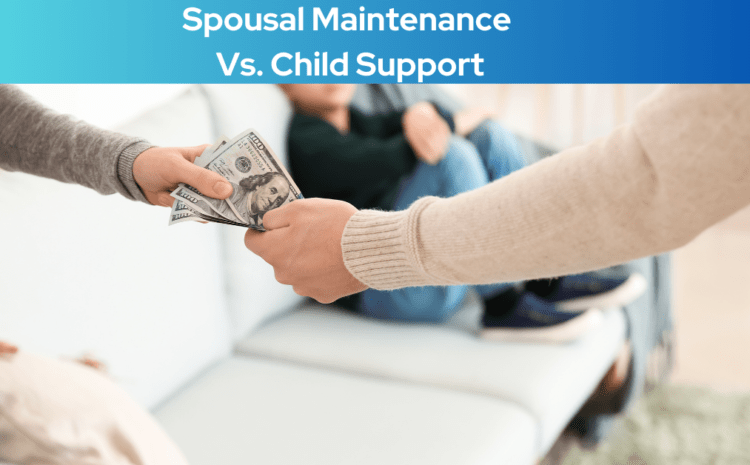
In legal proceedings concerning family matters, particularly divorce or separation, two critical aspects often arise: spousal maintenance and child support. While both serve to provide financial assistance, they differ significantly in their purpose, scope, and legal considerations. In India, the provisions governing spousal maintenance and child support are primarily outlined in the Hindu Marriage Act, 1955, the Special Marriage Act, 1954, and the Hindu Adoption and Maintenance Act, 1956. These laws provide the framework for courts to determine the entitlement and quantum of maintenance or support based on the circumstances of each case.
In the landmark case of Jaya Singh v. Deepak Kumar (2001), the Supreme Court of India emphasized the importance of considering various factors, including the financial capacity of the parties and the needs of the children, in awarding maintenance and child support. The court underscored the obligation of both parents to provide financial support for their children and affirmed that child support must be prioritized to ensure the welfare and best interests of the child. In this article, we delve into the distinction between spousal maintenance and child support, examining the relevant provisions under Indian law and pertinent case laws elucidating these concepts.
Spousal Maintenance
Spousal maintenance, also known as alimony or spousal support, refers to the financial support provided by one spouse to the other following divorce or separation. Its primary purpose is to ensure that the financially dependent spouse, typically the one with lower income or earning capacity, can maintain a reasonable standard of living post-separation. Spousal maintenance is based on the principle of equitable distribution and aims to mitigate the economic disparity between the spouses resulting from the breakdown of the marriage.
Furthermore, in the case of Sunita Kachwaha v. Anil Kachwaha (2000), the Delhi High Court held that spousal maintenance should be awarded based on the earning capacity and financial needs of the parties, with due regard to the standard of living enjoyed during the marriage. The court emphasized that maintenance is not intended to punish or reward either spouse but rather to ensure fairness and equity in post-divorce financial arrangements.
Key Characteristics of Spousal Maintenance
1. Purpose
Spousal maintenance is designed to assist the economically disadvantaged spouse in meeting their financial needs, including housing, living expenses, and other necessities, after the dissolution of the marriage.
2. Duration
The duration of spousal maintenance varies and may be temporary or permanent, depending on factors such as the length of the marriage, the financial situation of the parties, and any other relevant circumstances.
3. Factors Considered
Courts consider various factors when determining spousal maintenance, including the earning capacity of each spouse, their financial needs and obligations, the standard of living during the marriage, and any other relevant factors.
4. Modifiability
Spousal maintenance orders may be modifiable based on changed circumstances, such as an increase or decrease in income, remarriage of the recipient spouse, or other significant life changes.
Child Support
Child support, on the other hand, pertains to the financial assistance provided by one parent to the other for the care, upbringing, and welfare of their child following separation or divorce. Unlike spousal maintenance, which focuses on supporting the ex-spouse, child support is intended to prioritize the needs and interests of the child. Furthermore, in the case of Sunita Kachwaha v. Anil Kachwaha (2000), the Delhi High Court held that spousal maintenance should be awarded based on the earning capacity and financial needs of the parties, with due regard to the standard of living enjoyed during the marriage. The court emphasized that maintenance is not intended to punish or reward either spouse but rather to ensure fairness and equity in post-divorce financial arrangements.
Key Characteristics of Child Support
1. Purpose
Child support aims to ensure that children receive adequate financial support from both parents to meet their day-to-day expenses, including food, clothing, education, healthcare, and extracurricular activities.
2. Obligation
Both parents have a legal obligation to provide financial support for their children, regardless of their marital status or custody arrangements. Child support is viewed as the right of the child rather than the parent.
3. Calculation
The amount of child support is typically determined based on statutory guidelines or formulas, taking into account factors such as the income of each parent, the child’s needs, and the standard of living.
4. Enforceability
Child support orders are enforceable by law, and failure to comply with court-ordered child support obligations can result in legal consequences, including wage garnishment, asset seizure, or even imprisonment in extreme cases.
Conclusion
In conclusion, while spousal maintenance and child support share the common goal of providing financial assistance, they differ significantly in their purpose, scope, and legal considerations. Spousal maintenance aims to support the economically disadvantaged spouse post-divorce, whereas child support prioritizes the needs of the children. Understanding the distinction between these two concepts is crucial for navigating divorce or separation proceedings and ensuring the equitable distribution of financial responsibilities among the parties involved.

Advocate Kiran S R – A highly skilled, passionate, dedicated advocate, with vast wealth of knowledge, professionalism, ethical approach and expert skills. One of the sharpest legal mindset brings the best principles of legal practice to the forefront. A qualified Engineer turned Advocate. His passion, dedication and vision to help and assist his clients achieve the best results is his driving force.

